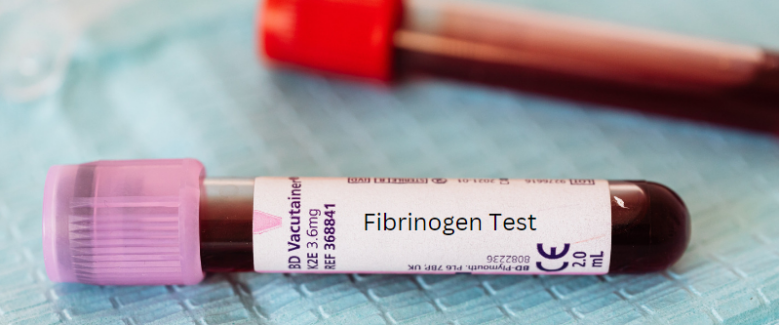A fibrinogen test, also known as a factor I assay, is a blood test that measures the level of fibrinogen in your blood. Fibrinogen is a protein produced by the liver that plays a crucial role in blood clotting. The normal range is 200 to 400 mg/dL (2.0 to 4.0 g/L) However, since different laboratories may use different measurements or specimens, these normal value ranges may vary slightly. Here are some reasons why a fibrinogen test may be recommended:
- Evaluation of Bleeding or Clotting Disorders: This test is often used as part of a series of tests to assess bleeding or clotting disorders. Abnormalities in fibrinogen levels can provide important information about the underlying cause of such disorders.
- Monitoring Anticoagulant Therapy: For individuals receiving anticoagulant medication (blood thinners) to prevent blood clots, regular monitoring of fibrinogen levels may be necessary. Levels can help determine the effectiveness and dosage of anticoagulant therapy.
- Diagnosis and Management of Disseminated Intravascular Coagulation (DIC): DIC is a serious condition characterized by abnormal blood clotting throughout the body, leading to excessive clotting and bleeding. Levels are often measured as part of the diagnostic process and to monitor the progression and management of DIC.
- Assessment of Liver Function: Since fibrinogen is primarily produced by the liver, a test can help evaluate liver function. Decreased levels of may indicate liver disease or damage.
- Preoperative Screening: Fibrinogen testing may be performed as part of preoperative screening to assess a patient’s risk of excessive bleeding or clotting during surgery. It helps in determining the patient’s overall coagulation status and guiding appropriate interventions if necessary.
- Evaluation of Thrombosis Risk: Fibrinogen levels can be used as one of the markers to assess the risk of developing blood clots, such as deep vein thrombosis (DVT) or pulmonary embolism (PE). Elevated levels may indicate an increased risk of thrombosis.
It’s important to note that the fibrinogen test is just one component of a comprehensive evaluation of clotting disorders or related conditions. Results will be interpreted in conjunction with your medical history, symptoms, and other laboratory tests to make an accurate diagnosis and develop an appropriate treatment plan if necessary.


